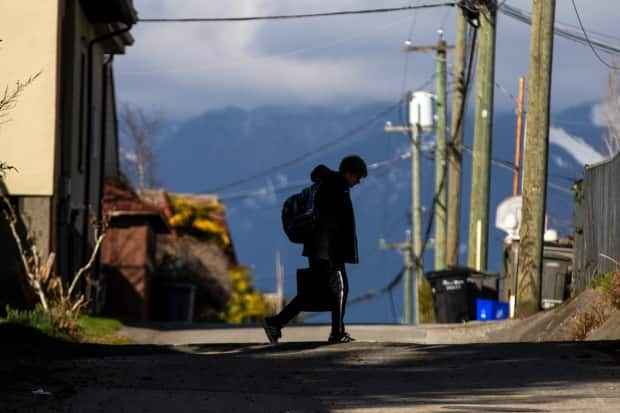Vancouver to temporarily close streets alongside 3 schools to encourage active transportation

The City of Vancouver will be closing the streets in front of three elementary schools starting Monday to encourage parents to use active transportation to pick up and drop off their children.
One street running alongside each of Hastings, Lord Roberts and Van Horne elementary schools will be closed for 30 to 45 minutes during peak pick-up and drop-off times.
During that time, no motor vehicles will be allowed to enter or exit the affected block.
The pilot starts Monday and will be in place until May 7.
The city chose streets that allow nearby residents to still access their homes. It also has ensured reserved parking or designated pick-up and drop-off spots for parents or students with disabilities.
'We're really excited'
Ian Rowe, chair of the Lord Roberts parent advisory council, says he and most parents were glad the city was trying something new to discourage driving.
"School congestion, traffic and safety has been an issue every single year," Rowe said. "And so we're really excited."
The pilot wasn't most parents' preferred option, Rowe says, in large part because it requires parent volunteers twice a day, every day, for it to work.

Rowe says parents at the West End elementary school wanted permanent infrastructure changes instead, like continuing the separated bike lane along Comox Street in front of the school in order to make cycling a safer option.
A few parents objected to the pilot, Rowe says, but the parent advisory council has been working with them to encourage use of the other two streets that flank the school where vehicular traffic will still be allowed.
"We're always going to have parents who need to drive," Rowe said.
Health researcher Mariana Brussoni previously told CBC News that parents face many challenges trying to get their kids to school by foot or bike — including busy schedules, multiple drop-offs and schools that are too far away.
School streets around the world
Less than 25 per cent of students across B.C. use active transportation to get to school, according to a written statement from the Ministry of Transportation last year.
According to the city's webpage for the pilot, so-called school streets are popular in several places around the world and they have been shown to create a safer environment for children, improve air quality and encourage active transportation.
In London, England, nearly 350 school streets have been implemented. The city says 81 per cent of parents there were supportive of the measures, which reduced nitrogen dioxide air pollution by 23 per cent. As a result, 18 per cent of parents reported driving less.
The city says school streets were also implemented in Toronto and Edinburgh.

